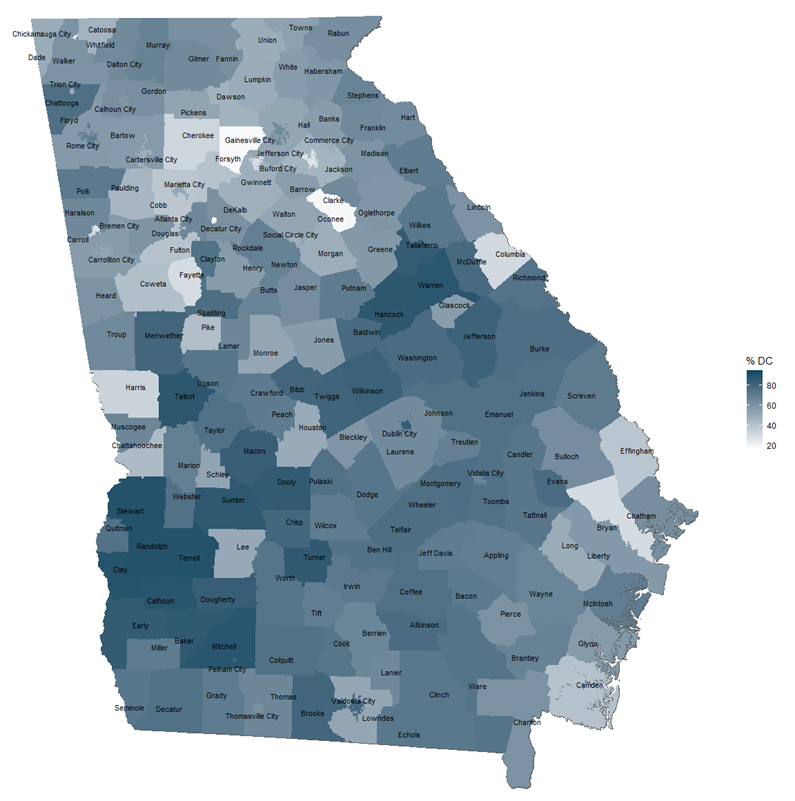Direct Certification
2023-2024 Direct Certification Definition
Direct Certification (DC) is used to measure poverty levels of students in Georgia. Direct certified students include:
1. Students living in a family unit receiving Supplemental Nutrition Assistance Program (SNAP) food stamp benefits,
2. Students living in a family unit receiving Temporary Assistance for Needy Families (TANF) benefits,
3. Students identified as homeless, unaccompanied youth, foster or migrant, and
4. Students living in a family unit with a Medicaid income that does not exceed free or reduced-price lunch eligibility standards.
School Year | Avg. DC% (District) | Avg. DC% (School) |
|---|---|---|
| 2018-19 | 37.8% | 35.5% |
| 2019-20 | 36.3% | 33.8% |
| 2020-21 | 40.2% | 38.3% |
| 2021-22 | 33.3% | 31.7% |
| 2022-23 | 37.5% | 35.7% |
| 2023-24 | 62.8% | 59.8% |
Changes to Direct Certification Definition
The definition of Direct Certification expanded to include four categories in 2023-24. The fourth category was added after Georgia began participating in the USDA’s Medicaid Demonstration Project. Georgia’s participation in the Project allowed for schools to use Medicaid income to determine students’ free or reduced-price lunch eligibility.
By broadening the criteria, the number of students identified as Directly Certified for free/reduced-price meals (FRPM) increased. This was a particularly important policy change for students from low-income households who may have previously fallen through the gaps in the traditional FRPM application process.
As a result of the definition change, the percentage of students identified as Directly Certified at both the school and district levels has increased substantially between 2022-23 and 2023-24. The increased rates of Directly Certified students, therefore, reflect a policy change and not a sudden increase in student poverty.
The graphs below show how the change in definition has led to an increased number of schools reporting higher rates of students identified as Directly Certified.
2023-2024 Georgia Direct Certification District Map
